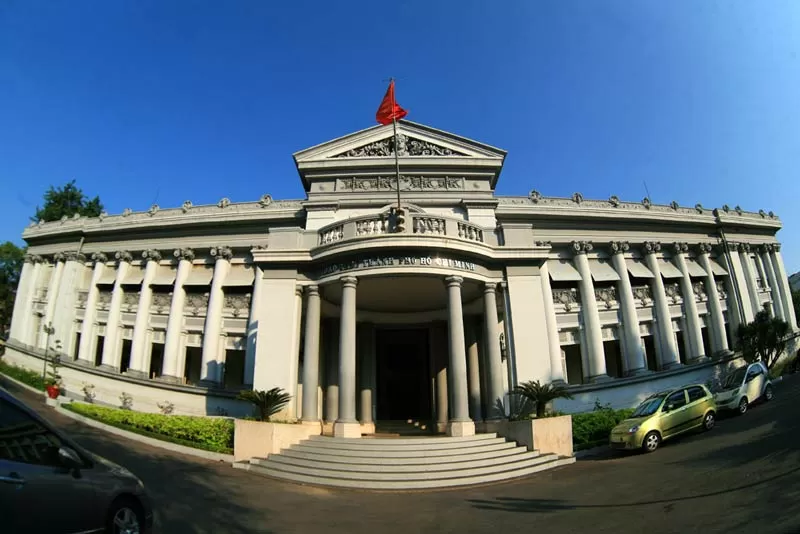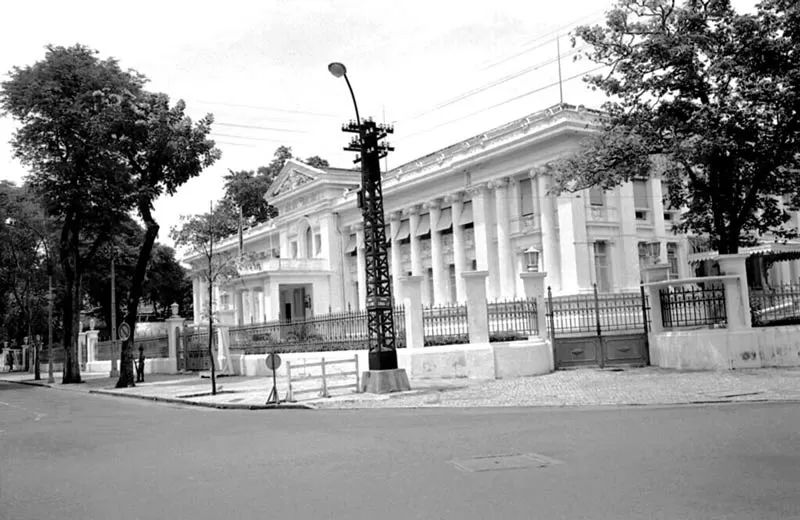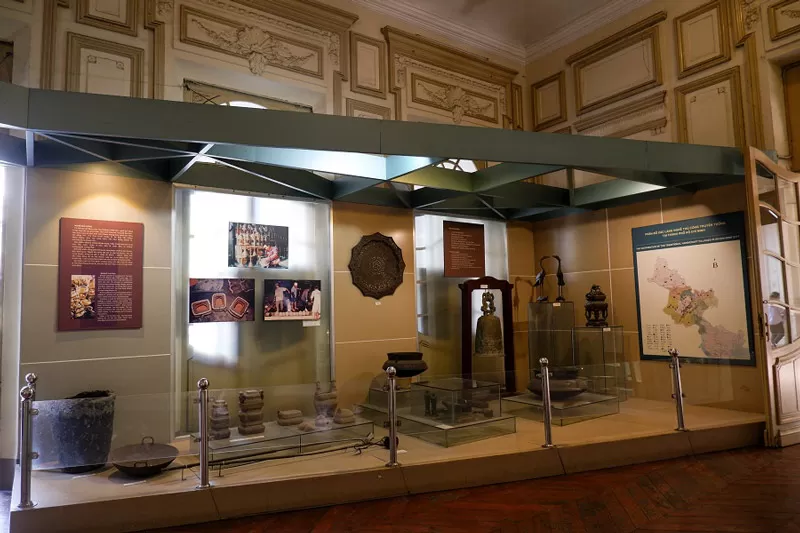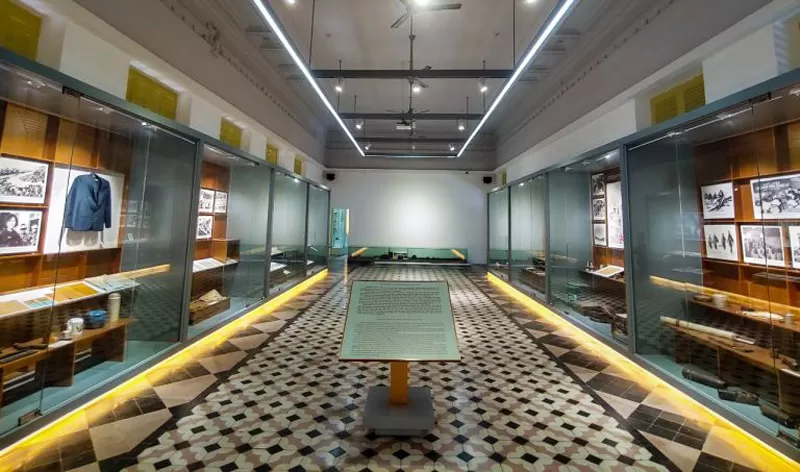Imagine walking through the vibrant streets of Ho Chi Minh City, feeling the pulse of history beneath your feet. One monument, in particular, stands as a testament to the city’s rich narrative – the Gia Long Palace, now known as the Ho Chi Minh City Museum. This architectural marvel not only reflects the aesthetic sensibilities of its time but also serves as a silent witness to the tumultuous events surrounding its existence. So, ready your curiosity and let Unilever.edu.vn guide you through the intricate stories and vibrant exhibitions housed within the walls of this historical site!
Introduction to Gia Long Palace
Situated at 65 Ly Tu Trong Street, Ben Nghe Ward, District 1, Ho Chi Minh City, the Gia Long Palace is a grand structure that has undergone significant transformations since its inception. Official visiting hours are from 8:00 AM to 5:00 PM, with an entrance fee of about 30,000 VND for a tour lasting approximately two hours. Many might recall the famous Independence Palace, but few are familiar with the equally significant Gia Long Palace. Initially built as the residence of the French Vice Governor of Indochina, the building now functions as a museum, preserving essential artifacts from a pivotal era in Saigon’s history.
This storied palace occupies around 2 hectares in the bustling center of Saigon, flanked by bustling streets: Ly Tu Trong, Le Thanh Ton, Nam Ky Khoi Nghia, and Pasteur. If you’re visiting one of Ho Chi Minh City’s iconic landmarks, taking the time to explore both the Gia Long Palace and the Independence Palace should top your itinerary.
 Image of Gia Long Palace's exterior showcasing its architectural grandeur
Image of Gia Long Palace's exterior showcasing its architectural grandeur
Significant Historical Milestones of Gia Long Palace
The Construction Era
The foundation stone for Gia Long Palace was laid in 1885, with completion occurring in 1890. Designed by French architect Alfred Foulhoux, the palace’s architecture reflects French colonial influence. Beyond the Gia Long Palace, Foulhoux was responsible for several notable structures in Saigon that endure today, such as the City Hall, Central Post Office, and Customs House.
The initial design aimed at establishing a Museum of Commerce, showcasing products from Nam Ky. However, as the construction progressed, the focus shifted to creating a residence for the Vice Governor of Indochina. The first occupant of this historical residence was Henri Eloi Danel, who reign from August 9, 1889, to September 11, 1892. At the time, it was commonly referred to as the “Vice Governor’s Palace.”
 A historical photograph capturing the Gia Long Palace upon its completion
A historical photograph capturing the Gia Long Palace upon its completion
Political Turmoil and Transformations
Following Danel, the palace hosted 14 subsequent Vice Governors of Indochina. By 1912, French officials dissolved the Vice Governorship and established the position of Governor-General of Cochinchina. Device Cochin, throughout the tumultuous years leading up to 1945, the palace saw a succession of leaders and shifting political climates.
During World War II (1939-1945), it changed hands yet again when Japanese forces occupied it. Following the war, the palace became a stronghold for various governments, including that of the Japanese, British, and eventually the French, who controlled it until the late 1950s when Ngô Đình Diệm established it as the Presidential Palace for the State of Vietnam.
In 1954, shortly after, Emperor Bảo Đại solidified its identity by officially naming it the Gia Long Palace, a title that continues to stand.
![]() An iconic photograph of Gia Long Palace during the political upheaval of 1963
An iconic photograph of Gia Long Palace during the political upheaval of 1963
Following the unification of Vietnam on April 30, 1975, the palace was placed under the management of the Socialist Republic of Vietnam and remained unoccupied for a time. Finally, on December 13, 1999, it was declared the Ho Chi Minh City Museum, making it a cherished cultural landmark.
Exploring the Interior of Gia Long Palace
Exhibition Areas
Entering the Gia Long Palace, visitors are greeted by a strikingly adorned interior that embodies classical Western architectural style. With its high ceilings, intricate plasterwork, and dazzling crystal chandeliers, the palace exudes a sense of elegance.
On the ground floor, you will discover the Industrial and Handicraft Room, where artifacts reflecting the 19th-century craftsmanship in Saigon, such as metal casting, gold and silver work, ceramics, and textiles, are on display.
 Interior view showcasing the Industrial and Handicraft Room filled with historical artifacts
Interior view showcasing the Industrial and Handicraft Room filled with historical artifacts
Opposite this room lies the Port Exhibition Room, a fitting tribute to Saigon’s once-thriving commercial landscape, showcasing over 500 items chronicling the prosperous trading activities and bustling markets, such as Ben Thanh Market, during French colonial rule.
Additionally, do not miss the Natural History and Archaeology Room, which offers a peek into the geological history of Southern Vietnam. Ascending to the first floor, one can explore the Vietnamese Currency Room, housing a plethora of historic currency samples.
 A detailed look at exhibits showcasing historical trading activities in Saigon
A detailed look at exhibits showcasing historical trading activities in Saigon
The Secret Shelter
A fascinating feature of Gia Long Palace is the secret bunker constructed during the presidency of Ngô Đình Diệm, primarily designed as a safeguard in anticipation of political upheaval. Built between May 1962 and October 1963, the shelter is reinforced with concrete and features four solid iron doors.
Although rumored to connect to escape routes throughout the city, it was merely a protective measure during bombardments, lacking actual exits leading outside the palace grounds.
 A historical photograph capturing the Gia Long Palace upon its completion
A historical photograph capturing the Gia Long Palace upon its completion
Conclusion
Visiting the Gia Long Palace is not merely an excursion; it’s an invitation to engage with history and uncover the layers that have shaped modern-day Ho Chi Minh City. This museum, with its array of exhibits and rich stories of resilience, innovation, and transition, offers an insightful experience for both tourists and locals alike.
Don’t miss the opportunity to immerse yourself in the chronicles of Saigon’s glorious past. Stay tuned with Unilever.edu.vn for more travel tips and exploration guides to the enchanting landscapes of Việt Nam!
